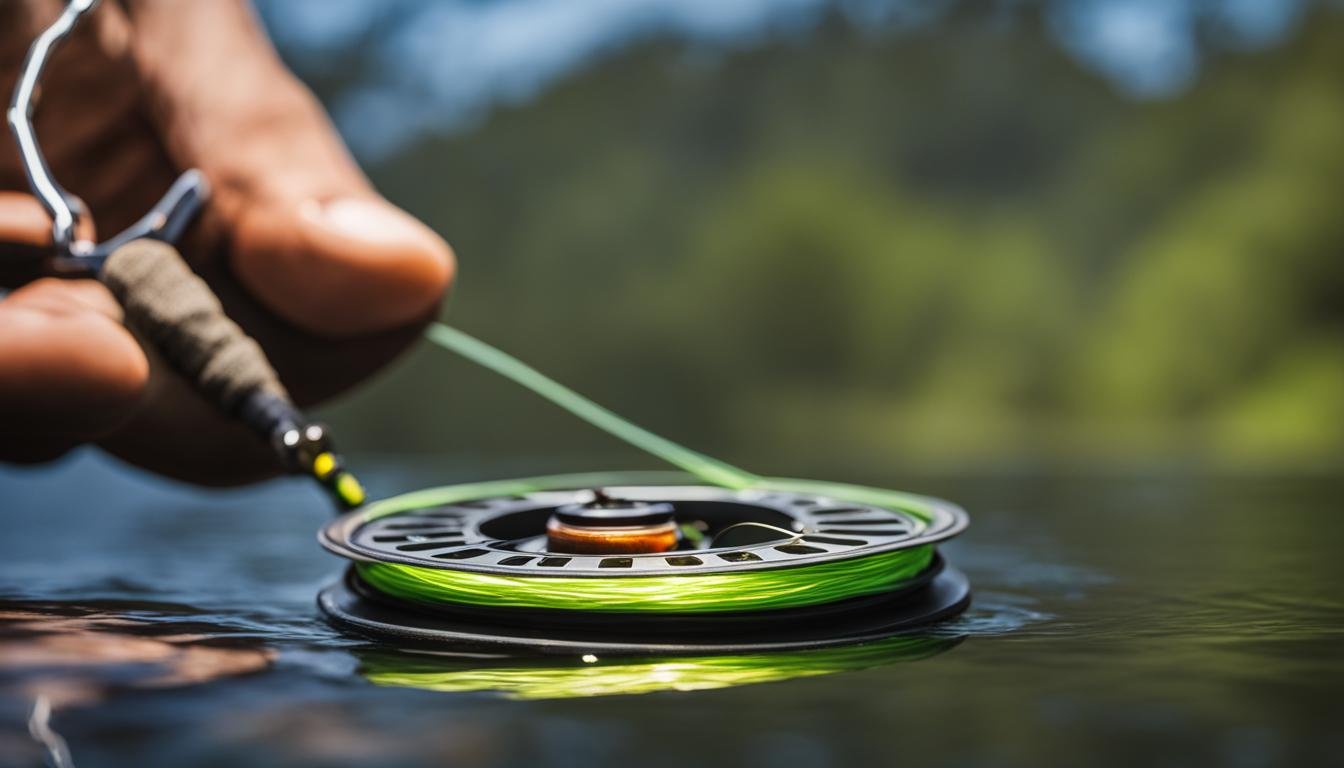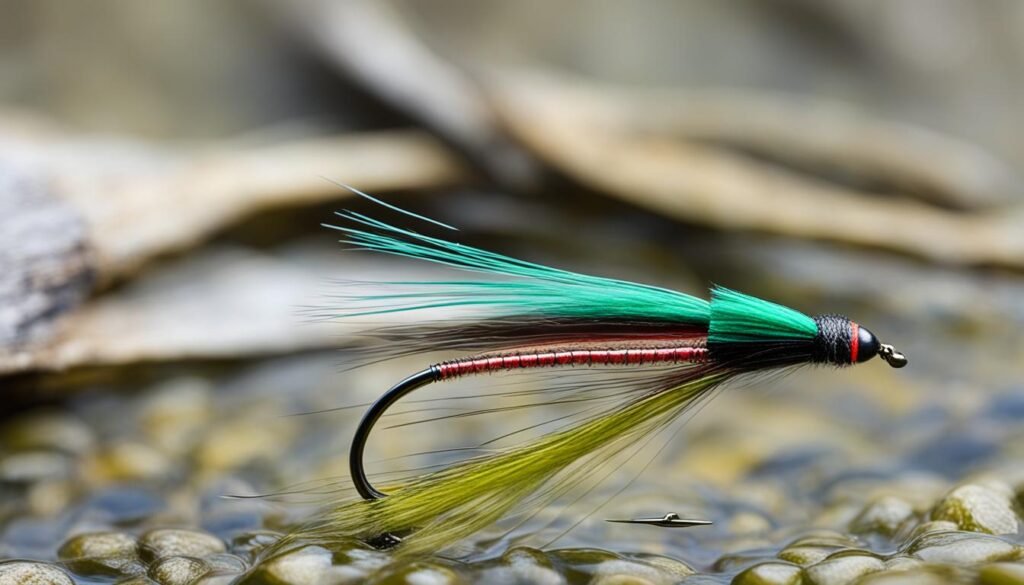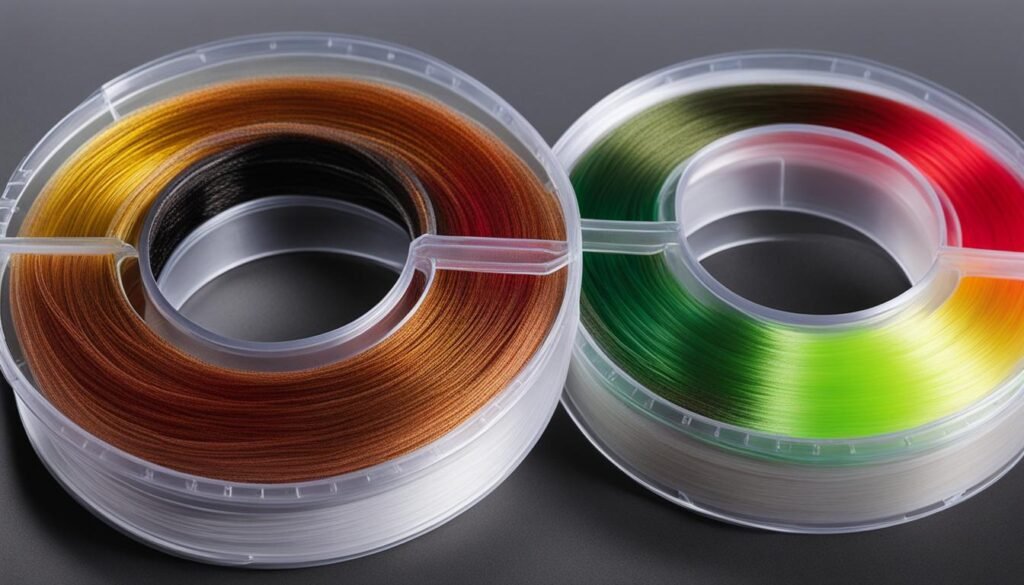Welcome to our ultimate guide to choosing the best fly fishing tippet! When it comes to fly fishing gear, the tippet plays a crucial role in ensuring a successful and enjoyable fishing experience. It connects your fly line to the fly, allowing for delicate presentation and precise casting. But with so many options available, how do you choose the right tippet for your needs? In this comprehensive guide, we will walk you through everything you need to know about selecting the perfect fly fishing tippet.

- Understanding the Role of Fly Fishing Tippet
- The Fly Fishing Leader and Tippet Measurement System
- Materials Matter: Monofilament vs. Fluorocarbon vs. Co-Polymer
- Fly Fishing Tippet: Selecting the Perfect Size and Material
- The Art of Matching Tippet Size with Fly and Fish Species
- Tippet's Influence on Fly Presentation and Fishing Success
- Maintenance and Sustainability: Caring for Your Fly Fishing Tippet
- Maximizing Your Fly Fishing Experience with the Optimal Tippet
Key Takeaways:
- Choosing the right fly fishing tippet is essential for successful fly presentation and fishing.
- Consider factors such as tippet size and material when selecting your tippet.
- The tippet connects the fly line to the fly and acts as a link between the two.
- Tippet size is measured in ‘X’ sizes, with larger numbers indicating thinner tippets.
- Tippet material options include monofilament, fluorocarbon, and co-polymer, each with its own advantages.
Understanding the Role of Fly Fishing Tippet
The tippet is an essential component of your fly fishing gear, serving as the section of fishing line that connects the fly line to the fly. It plays a crucial role in various aspects of your fly fishing experience, including fly presentation and fishing success.
First and foremost, the tippet enables a smooth and delicate presentation of your fly. Its slender diameter allows for a more natural drift and reduces the chance of spooking fish. This is especially important when targeting wary and selective trout.
Additionally, the tippet acts as a shock absorber during the fight with a fish. Its flexibility helps to absorb the sudden movements and surges of a hooked fish, minimizing the risk of break-offs and increasing your chances of landing your catch.
Furthermore, the tippet serves as a crucial link between the bulky fly line and the small, lightweight fly. It ensures a seamless transition between these two components, promoting efficient casting and accurate fly placement.
The Fly Fishing Leader and Tippet Measurement System

The fly fishing leader and tippet measurement system plays a crucial role in determining the size and strength of the tippet you need for successful fly fishing. Understanding this system is essential for selecting the right tippet size and diameter for your fishing needs.
Tippet Size and Diameter Explained
The size and diameter of a tippet refer to its thickness, which is measured in thousandths of an inch. Tippet sizes are denoted by ‘X’ sizes, with larger numbers representing thinner tippets. For example, a 3X tippet is thicker than a 6X tippet. The diameter of the tippet directly affects its strength and flexibility, ultimately influencing your ability to effectively present your fly.
Deciphering the ‘X’ Size: The Thicker to Thinner Spectrum
The ‘X’ size system follows a spectrum where larger numbers indicate thinner tippets. As the ‘X’ size decreases, the tippet becomes thinner, allowing for a more delicate presentation of your fly. Thin tippets are ideal for situations where fish are selective or the water is clear and calm. Conversely, thicker tippets are more suitable for situations where fish are aggressive or the water is fast-moving.
How Pound-Test Measurement Relates to Fish Size
The pound-test measurement of a tippet refers to the weight it can handle before breaking. Higher pound-test tippets are stronger and can handle larger fish. The pound-test rating provides an indication of the tippet’s durability and ability to resist the force exerted by aggressive fish during fights. It is important to choose a pound-test measurement that matches the size and strength of the fish you are targeting.
| Tippet Size (‘X’) | Tippet Diameter (inches) | Pound-Test Measurement | Fish Size |
|---|---|---|---|
| 0X | 0.011 | 15 lb | Large Saltwater Species |
| 1X | 0.010 | 13 lb | Medium to Large Freshwater Species |
| 2X | 0.009 | 10 lb | Medium Freshwater Species |
| 3X | 0.008 | 8.5 lb | Small to Medium Freshwater Species |
| 4X | 0.007 | 6 lb | Small Freshwater Species |
| 5X | 0.006 | 5 lb | Small Trout and Panfish |
| 6X | 0.005 | 4 lb | Trout and Small Fish |
Materials Matter: Monofilament vs. Fluorocarbon vs. Co-Polymer

Fly fishing tippets are available in various materials, including monofilament, fluorocarbon, and co-polymer. Each material has its own unique properties and advantages. Understanding the characteristics of each tippet material will help you choose the best option for your specific fishing situations.
The Versatility of Monofilament
Monofilament tippets offer versatility, making them a popular choice among anglers. They are affordable, widely available, and suitable for a wide range of fishing conditions. Monofilament tippets are known for their flexibility, allowing for easy casting and knot tying. They also have a high knot strength and are less likely to tangle compared to other tippet materials. Whether you are fishing in freshwater or saltwater, monofilament tippets provide reliable performance and are a great all-around choice.
The Stealth of Fluorocarbon
Fluorocarbon tippets are highly regarded for their stealthy nature in the water. They have a refractive index close to that of water, making them virtually invisible to fish. This property gives fluorocarbon tippets an edge when targeting wary and selective fish species. Additionally, fluorocarbon tippets have excellent abrasion resistance, allowing them to withstand encounters with rocks, vegetation, and sharp-toothed fish. If you are targeting fish in clear and calm waters or facing especially selective fish, fluorocarbon tippets can greatly increase your chances of success.
Co-Polymer: The Best of Both Worlds?
Co-polymer tippets combine the best qualities of both monofilament and fluorocarbon. They offer superior knot strength, flexibility, and a moderate level of invisibility in the water. Co-polymer tippets have a balanced combination of versatility and stealth, making them suitable for a wide range of fishing situations. Whether you are fishing for trout in a river or targeting bonefish on the flats, co-polymer tippets provide the best of both worlds.
Fly Fishing Tippet: Selecting the Perfect Size and Material

When it comes to fly fishing, selecting the perfect tippet size and material is crucial for success on the water. Different factors, such as the size of the fly, the weight of the line, and the type of water you are fishing in, all play a role in determining the ideal tippet for your specific fly fishing situations.
The size of the fly is a key consideration when choosing the thickness of your tippet. Larger flies require a thicker tippet to handle the extra weight and provide proper support. On the other hand, smaller flies can be effectively presented with a thinner tippet, allowing for a more delicate and natural drift.
The weight of the line also influences the selection of the tippet material. Heavier lines require stronger tippets to ensure optimal performance and prevent breakage during casting and fighting fish. Lighter lines, on the other hand, can be paired with finer tippets for a more subtle presentation.
The type of water you are fishing in further dictates the choice of tippet material. In clear and spooky water, fluorocarbon tippets excel due to their low visibility and heightened stealth. In contrast, monofilament tippets are versatile and widely used in a variety of fishing conditions. Understanding the characteristics of different tippet materials will help you achieve the desired fly presentation in various water situations.
To illustrate the importance of selecting the perfect tippet, consider the following example. Imagine you are fishing for trout in a crystal-clear spring creek. The flies you are using are small and delicate, requiring a fine presentation to fool the selective trout. In this scenario, a thin fluorocarbon tippet would be the ideal choice, as it offers excellent invisibility and allows for a gentle drift.
By selecting the perfect tippet size and material, you can optimize your fly fishing experience and increase your chances of success on the water. So take the time to consider the size of your fly, the weight of your line, and the type of water you will be fishing in to ensure you have the perfect tippet for your specific fly fishing situations.
| Tippet Size | Recommended Fly Size | Tippet Material |
|---|---|---|
| 3X | Large flies (e.g., streamers) | Monofilament |
| 5X | Medium-sized flies (e.g., nymphs) | Monofilament |
| 7X | Small flies (e.g., dry flies) | Fluorocarbon |
DISCLAIMER: The links I mention may be affiliate links. If you purchase through one of these links I may receive a commission, at no cost to you. As an Amazon Associate I earn from qualifying purchases.
The Art of Matching Tippet Size with Fly and Fish Species
Matching the tippet size to the fly size and fish species is crucial for achieving proper balance and enhancing your fly fishing success. When selecting a tippet, using one that is too thick or too thin in relation to the fly can negatively impact the presentation and effectiveness of your flies. It is essential to find the right tippet size that complements the fly size, ensuring that it behaves naturally in the water.
Different fish species may require different tippet sizes to achieve the perfect balance between strength and stealth. Larger or more powerful species, such as musky or pike, may necessitate a heavier tippet to withstand their strength. In contrast, smaller or more skittish species, such as trout or panfish, may require a finer tippet to minimize the chance of spooking them.
By understanding the art of matching tippet size with the fly and fish species, you can maximize your chances of success on the water. It allows you to present your fly in a way that entices the fish while ensuring that your tippet has enough strength to handle any potential battles. Achieving this delicate balance is key to making the most of your fly fishing experience.
Tippet’s Influence on Fly Presentation and Fishing Success
The tippet is a critical factor in determining the success of your fly presentation and fishing endeavors. Its size not only affects the movement of the fly in the water but also plays a role in influencing the overall action of your fly. Understanding the influence of tippet size on fly movement can significantly enhance your fishing technique and increase your chances of success.
When it comes to tippet size, thicker tippets provide more resistance, which can influence how the fly moves in the water. A thicker tippet can impart more action and life to the fly, enhancing its attractiveness to fish. On the other hand, using a thinner tippet can allow for a more delicate and subtle presentation, which may be necessary in certain fishing situations.
In addition to considering tippet size, it is crucial to determine the right tippet for different water conditions. Various water conditions, such as fast-flowing rivers, calm lakes, or windy days, require different tippet sizes to achieve the desired fly presentation. Adapting your tippet selection to the specific water conditions will help you present your fly naturally, increasing your chances of enticing fish to strike.
Maintenance and Sustainability: Caring for Your Fly Fishing Tippet
Proper maintenance and care of your fly fishing tippet are essential for prolonging its life and ensuring optimal performance. By following a few simple practices, you can preserve the integrity of your tippet and contribute to the sustainability of our natural resources.
Tippet Maintenance Tips
- Rinse tippet with freshwater after each use
- Dry tippet thoroughly before storage
- Use tippet tender or spool boxes for organization
Tippet Care Tips
- Store tippet in a cool, dry place
- Avoid exposure to direct sunlight and extreme temperatures
- Avoid contact with sharp objects
Sustainability Actions
- Dispose of old tippet properly
- Look for tippet recycling programs
- Dispose of tippet in designated waste receptacles
- Leave the fishing area clean and free of tippet waste
Maximizing Your Fly Fishing Experience with the Optimal Tippet
When it comes to fly fishing, selecting the optimal tippet plays a crucial role in maximizing your overall experience and achieving fishing success. By carefully considering factors such as tippet size, tippet material, and the specific fishing conditions, you can choose the best tippet that suits your fly fishing needs.
The right tippet not only enhances your fly presentation but also improves your chances of hooking and landing fish. It allows for a delicate and precise presentation, ensuring that your fly behaves naturally in the water, enticing even the most wary of fish. With a well-selected tippet, you’ll have the confidence to cast your fly with precision, increasing your chances of success.
Whether you’re targeting massive trout in crystal-clear streams or chasing feisty bass in murky waters, selecting the right tippet is the key to a successful fly fishing adventure. With the knowledge gained from this ultimate guide, you’ll be equipped to make informed decisions about your tippet selection, ensuring that you have the optimal tools to maximize your fly fishing experience and achieve the best results on the water.
Looking For More Fly Fishing Gear?
Check out our other articles, reviews and recommendations on fly fishing gear


